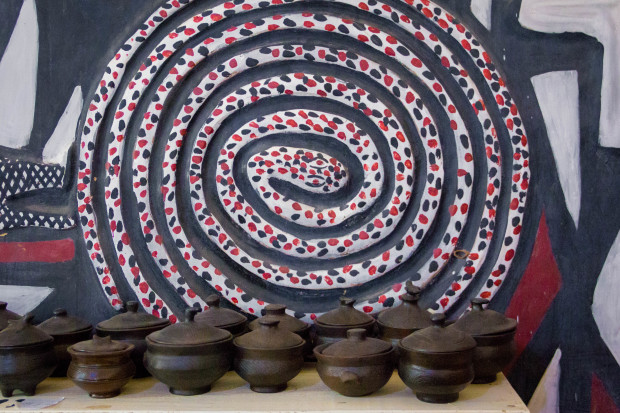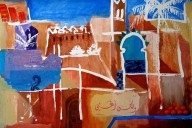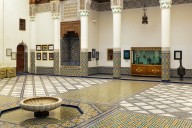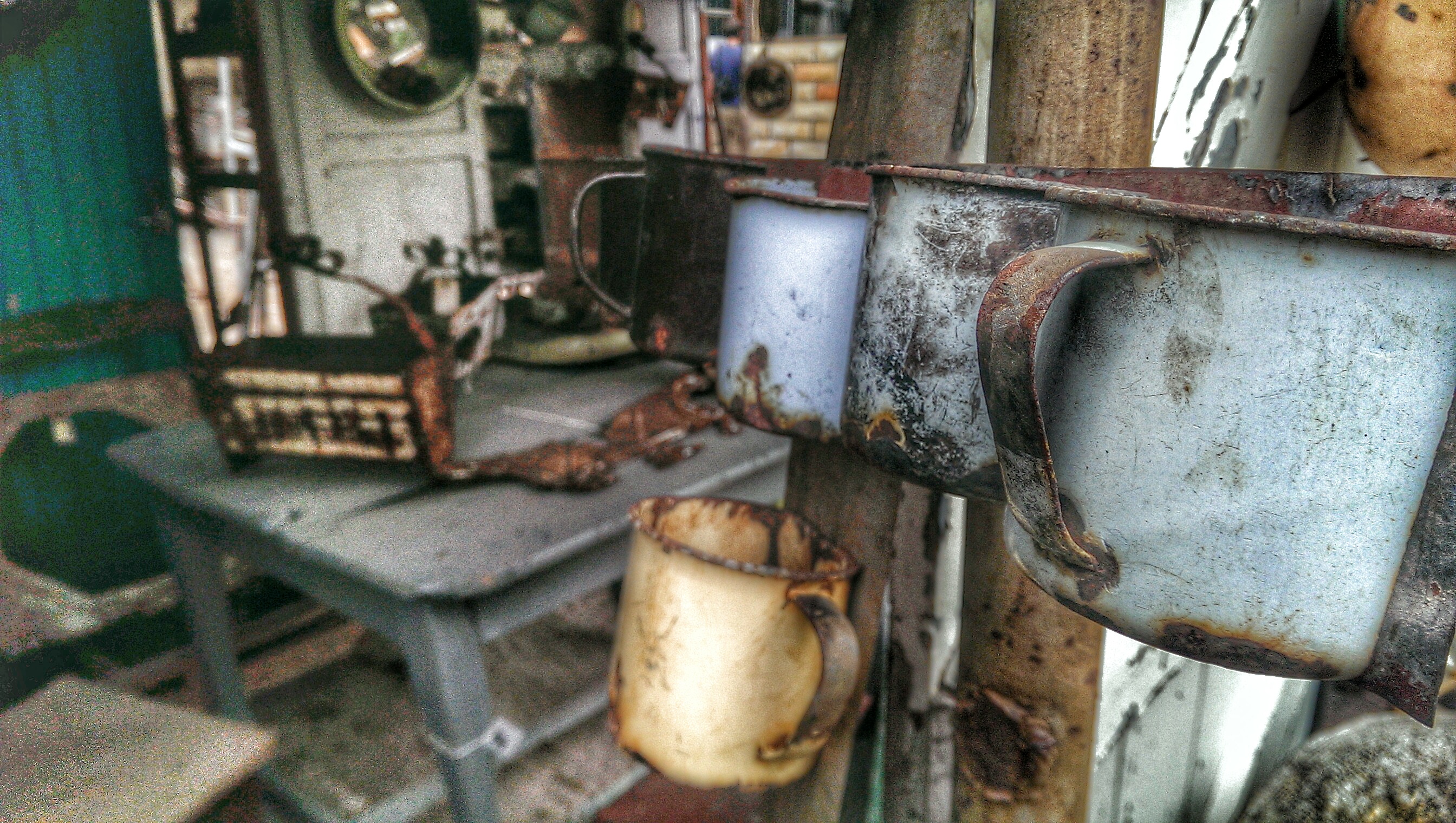This is a guest post by Vicki Brown of La Nomadita. Follow her on Twitter for more excellent stories from all over the world.
There is a saying in Ghana: It is not wrong to go back for that which you have forgotten, which could have been written about Sirigu.
This little village, rising up out of the windswept earth of Ghana’s Upper East Region, was close to being forgotten. As the arid Sahel crept further south and the land dried out, life here became harder. There was less food and less work; the youth migrated to the expanding cities. The traditional paintings that had adorned the mud walls of Sirigu’s homes and compounds faded and flaked in the dry harmattan winds, before the annual rains caused the walls to crumble, taking the artworks with them.
The paintings, which had once given this region a sense of identity, had always needed to be redone every few years, but as the community struggled, the preservation of the paintings seemed a pointless task. Tradition was standing in the way of moving forward, they thought; why spend time on the paintings when they will disappear again in another couple of years?
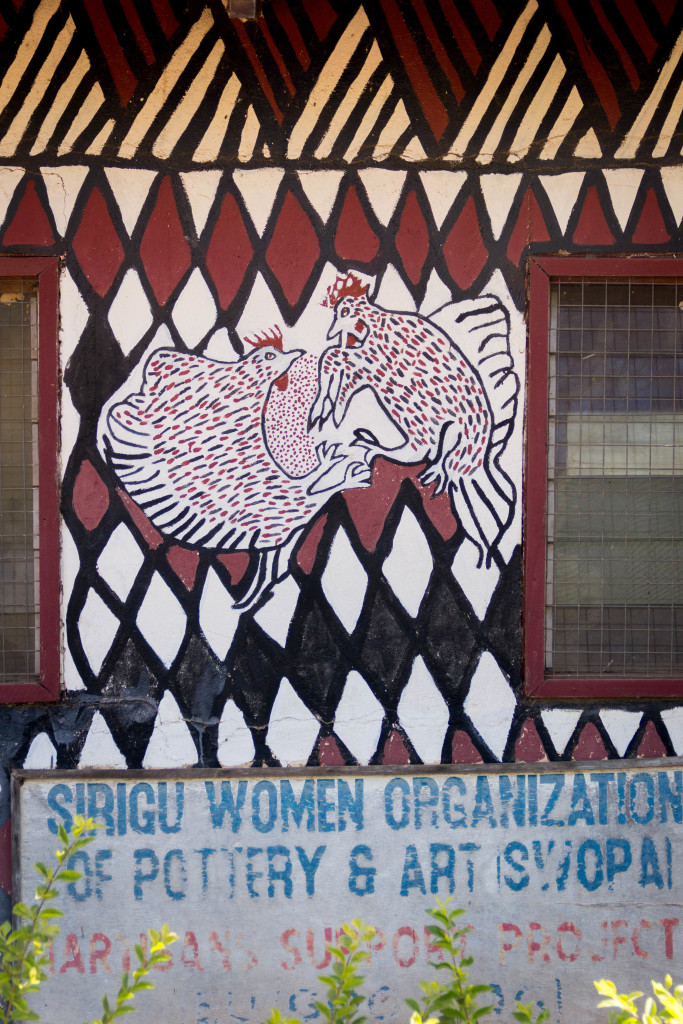
But not everyone saw the paintings in this way. A local teacher named Melanie Kasise – known fondly as Mama Melanie – had grown up in Sirigu, and spent 35 years as a teacher, including a stint in Israel. Perhaps her time abroad helped her understand the uniqueness of the culture in her hometown; perhaps she just had an artistic eye. But when she retired from teaching in 1995, she noticed the fading designs, which were more than an apt metaphor for Sirigu’s fading culture – and she wanted to do something about it.
Beginning with a group of 54 women, Mama Melanie formed the Sirigu Women Organisation of Pottery and Art (SWOPA) – encouraging them to come together and hone their skills.

Some made ceramic pots and vases, with patterns scored into them with pebbles. Others focused on painting – on the buildings, and on canvas. Rather than being sold cheaply in local markets, the pots and canvases could command higher prices in city craft shops.
The striking mud buildings, glowing with red ochre once more, put Sirigu onto the tourist map, and visitors to the village could enjoy painting and ceramic workshops, and purchase the pots, baskets and pictures created by the women. What’s more, the women no longer viewed the artworks as outdated traditions; they gained pride in their work and their skills, and a newfound sense of identity.
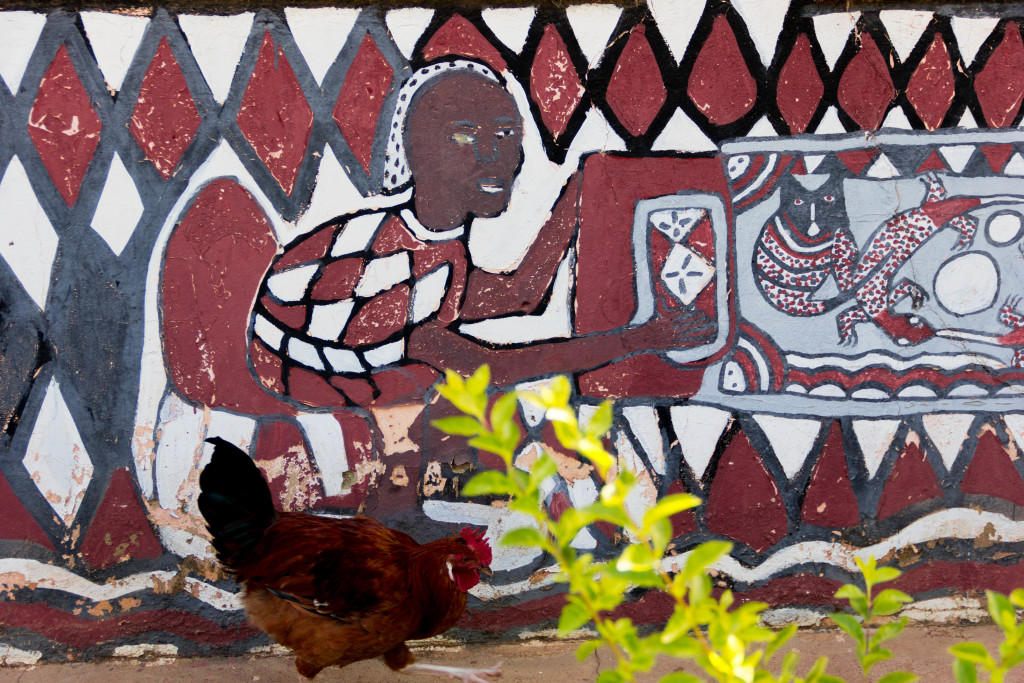
It is particularly poignant that this was “women’s work” as the women of Sirigu had always been beholden to their husbands or fathers, who controlled the money. Through the sale of the artworks, however, the women gained independence, and did not have to approach their husbands each time they wanted to pay for something.
Had Mama Melanie not stepped in to revive this artform when she did, it is very likely that it could have vanished completely. As with much folk art – from music to dance, sculpture to cooking – it is not an academic subject. Skills and stories are passed from woman to woman. There are no textbooks documenting its creation, and – given the temporary nature of Sirigu’s artworks – there would be little physical evidence of its existence before long either. But starting with those 54 women in 1995, there are now over 300 working with SWOPA – and over 900 visitors per year who come to enjoy this wonderful African art in its birthplace.
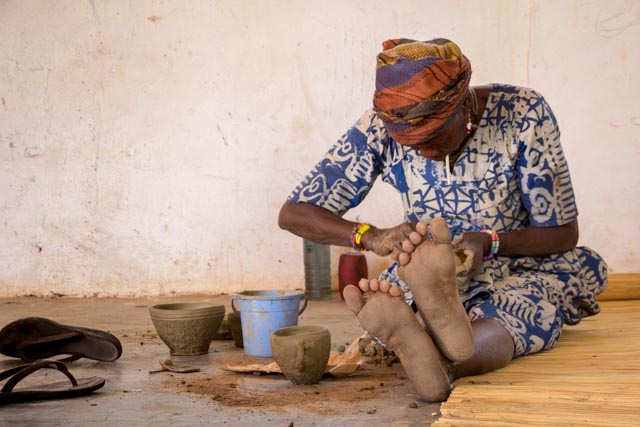
Much folklore surrounds the paintings of Sirigu. Within Ghana they are unique – this region has more in common with neighbouring Burkina Faso than with the rest of Ghana, both geographically and culturally.
Young women were traditionally forbidden from painting outside of their father’s house; if they were to do so, they were told they would not marry or bear children. In addition, the distinctive patterns themselves each had meanings – a kind of hieroglyphic which could be used to display a person’ characteristics – or aspirations.

The Sirigu paintings use just three colours – black, red and white, traditionally created with natural pigments, although the modern canvases are likely to be painted with acrylic. Dots represent blessings; a zigzag triangle pattern shows respect. Stripes reveal excitements, while wavy lines represent the road to success. Local animals are painted too; the lizard symbolises friendship, and the snake offers protection. Here in Sirigu, the buildings tell stories: dignity and caring, they say. Or secrecy and money.
Mama Melanie’s philosopy is that “we should always retain the good aspects of our culture.” In deciding to go back for what had been forgotten, she and SWOPA have brought back to life not just the crumbling paintings – but the whole village.

